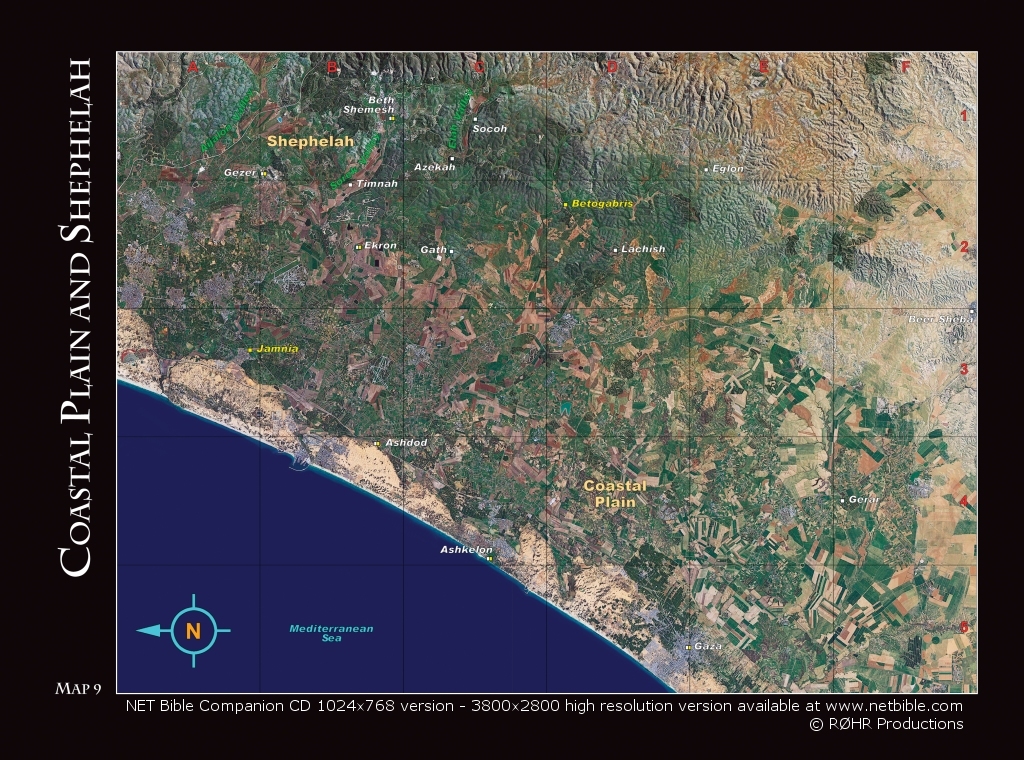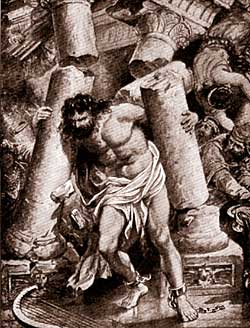 Gaza has always spelled trouble. Home of the Philistines, a race of seafaring Greek idolaters, Gaza proved a source of endless misery for the patriarchs Avraham (Abraham,) Yitschak (Isaac,) and Yaakov (Jacob) in the years 1948-2255 ( 1813 BCE- 1523 BCE.) Faced with Philistine kidnappers and murderers, the patriarchs frequently had to conceal their identities as husbands to prevent the Philistines from murdering them to steal their wives. Throughout the Torah, the patriarchs sign several non-belligerence agreements with the Philistines, the cease fire agreement of the age, only to have them violated and later resigned from generation to generation.
Gaza has always spelled trouble. Home of the Philistines, a race of seafaring Greek idolaters, Gaza proved a source of endless misery for the patriarchs Avraham (Abraham,) Yitschak (Isaac,) and Yaakov (Jacob) in the years 1948-2255 ( 1813 BCE- 1523 BCE.) Faced with Philistine kidnappers and murderers, the patriarchs frequently had to conceal their identities as husbands to prevent the Philistines from murdering them to steal their wives. Throughout the Torah, the patriarchs sign several non-belligerence agreements with the Philistines, the cease fire agreement of the age, only to have them violated and later resigned from generation to generation.
An inscription from the Byzantine (post-Roman) period mentioning the city of "Gerarus," believed to be same Gerar mentioned in the book of Bereishit (Genesis.)
Beginning with the Jewish conquest of the land of Israel in 2248 (1272 BCE,) the Philistines become a constant source of pain, a thorn in Israel’s side. In repeating, forty year cycles, the Jews stray from God’s commandments and engage in the practices of their pagan neighbors. Because they are not fulfilling their divine mission, God removes his protection from the Jewish people. During these periods of spiritual weakness, the nation is not able to muster the will or ability to physically defend itself, and the Philistine muster from their capital cities Gat, Ekron, Ashdod, Ashkelon, and Gaza to overrun the borders of the Land of Israel oppressing and taxing the Jews.

A satellite photo showing the locations of Gat, Ekron, Ashdod, Ashkelon, and Gaza, although blogger shows them too small to be legible.
This suffering then leads the Jews to cry out in pain to God, who, upon hearing his people’s suffering and repentance, inspires a prophet to rally the people and lead them to victory over their adversaries.

Samson the Prophet kills 3,000 Philistines, self, in Gaza.
Then, after defeating their enemies, the Jews again begin to stray, chasing after foreign Gods, and the cycle repeats itself.

This proceeded for four hundred years, until the rise of King David in the year 2883 (877 BCE.) The people abandon their narrow tribal interests in exchange for a rising national consciousness, and King David is at last able to decisively able to route the Philistines at the battle of Emek Refaim (then a valley outside of Jerusalem today a happening Jerusalem singles neighborhood.)
From this point forward, the Phillistines, smashed and broken, gradually fade into history. Almost exactly 1,000 years later, having defeated and exiled thousands of Jews in the final Jewish revold, the name “Palestina” is revived by the Romans as to replace the term “Eretz Yisrael,” the Land of Israel, to linguistically sever the connection between the people and the Land of Israel. And today, the name has been revived, as “Palestine,” (Falastin in Arabic) for the same purpose. So my next trip is to see the thorn in our side, Gaza of the Philistines.

Getting together with the Yavneh Olami group on King George/Keren Hayesod Street, Jerusalem.
Bumping into Yaakov on the bus. We seem to end up on all the same tours.
 A nice little hilltop Jewish settlement west of Jerusalem.
A nice little hilltop Jewish settlement west of Jerusalem.

I thought that's a cool shot of a "ghost car" driving the wrong way down the street.
 Kiryat Gat, a Jewish city on the ruins of the ancient Philistine city of Gat. Today it houses the Intel computer chip manufacturing facility, which provides most of the town's employment.
Kiryat Gat, a Jewish city on the ruins of the ancient Philistine city of Gat. Today it houses the Intel computer chip manufacturing facility, which provides most of the town's employment.
 The term "Philistine" is still associated with unsophisticated brutishness.
The term "Philistine" is still associated with unsophisticated brutishness.
No comments:
Post a Comment